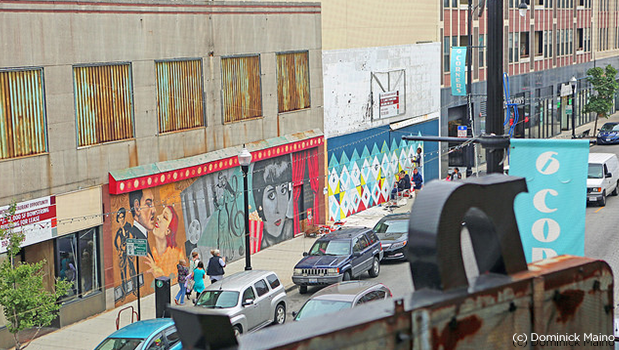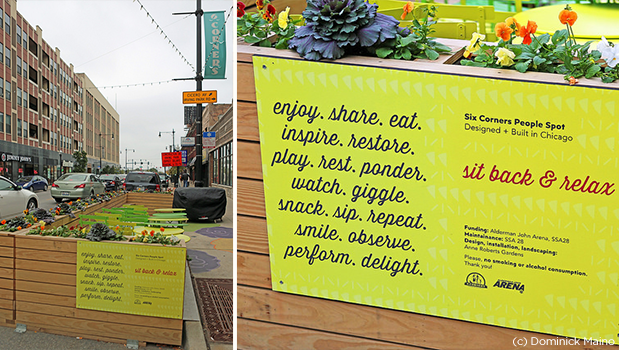Main Spotlight: Connecting, Innovating, and Sustaining a Healthy Main Street Movement
Key takeaways from six sessions at the 2025 Main Street Now Conference.

Marion, Iowa © Tasha Sams
We work in collaboration with thousands of local partners and grassroots leaders across the nation who share our commitment to advancing shared prosperity, creating resilient economies, and improving quality of life.

Emporia, Kansas © Emporia Main Street
Made up of small towns, mid-sized communities, and urban commercial districts, the thousands of organizations, individuals, volunteers, and local leaders that make up Main Street America™ represent the broad diversity that makes this country so unique.

Chicago, Illinois © Main Street America
Looking for strategies and tools to support you in your work? Delve into the Main Street Resource Center and explore a wide range of resources including our extensive Knowledge Hub, professional development opportunities, field service offerings, advocacy support, and more!

Waterloo, Iowa © Main Street Waterloo
Your one-stop-shop for all the latest stories, news, events, and opportunities – including grants and funding programs – across Main Street.

Kendall Whittier — Tulsa, Oklahoma © Kendall Whittier Main Street
Join us in our work to advance shared prosperity, create strong economies, and improve quality of life in downtowns and neighborhood commercial districts.

The soft tinkling of piano keys waft gracefully through open windows, eliciting head turns, smiles, and a pleasant break from otherwise routine afternoon commutes. For those windows belong not to buildings, but to the cars comprising a motorized backdrop at Six Corners. 92,000 cars, in fact, pass through the intersection of Irving Park, Milwaukee, and Cicero each day and on this occasion, those drivers are audience members for the students practicing their lessons on a baby grand piano placed on the public sidewalk.

This piano is part of the People Spot (above), the latest placemaking initiative by Six Corners Association, our business organization on Chicago’s northwest side, who, having received a call from a local music teacher, helped move it to its current location in front of our beloved frozen yogurt shop inviting all to partake in music-making. In the time between lessons, passersby of all ages, pause thoughtfully, pull up the bench and pound out a few keys before continuing on their daily journeys. Across the street, a whirl of tulle and ponytails hops through the squares of a Hopscotch in the minutes before ballet class. The hand painted game adorns the sidewalk outside of a storefront that recently housed Carpe Librum, a non-profit bookstore that popped up for the summer in what was a former bartending school and is now on the market.
These interactive gathering spaces give local people a reason to step out of their cars and onto the sidewalks of this bustling commercial corridor. It is not accidental; coupled with vibrant murals, twinkling lights stringed across Milwaukee Avenue, a smattering of sculptures, and brightly colored cafe tables, folks are drawn to the energy and liveliness these low cost, high impact items present. They break up the urban monotony of concrete and asphalt, inviting us to pause, beckoning us back home.
Placemaking is a strategy that Six Corners Association has enthusiastically applied to our community development efforts because of its seamless integration with the Main Street Approach our business organization adopted more than a decade ago. Cultivating a sense of place on our streets gives people a reason to visit, a reason to stay. It is a process that shies away from a one-sided consumeristic invitation and facilitates participation. Placemaking issues a charge, not to come and take away from this space, but to come and be a part of this place. It is an invitation to join, not to separate; to identify, to belong.
In the days following the 2016 Main Street Now Conference in Milwaukee, our team assembled to dialogue our ways through the experience and motivations that were sown in our respective sessions. Like commercial districts across the country, we are faced with the challenges of building and supporting a thriving small business atmosphere in a generation marked by the convenience of large shopping malls, ease of online shopping, and buying power possessed by an age of folks who have no recollection of the Main Street retail experience many remember in their nostalgia-tinted memories. Many of our customers can’t relate to this backward-facing revitalization push to “get it back to the way it was.” They weren’t even born. Globalization and “big box” is all they have known. Today’s largest buying class craves significance and experience rather than the one dimensional consumption habits many were born into.
As we talked, we returned to the tools Main Street provides for addressing this issue and reversing its effects. An asset-based approach helps us take inventory of what we have: small, distinct buildings in ideal square footage for small retailers, easy access to public transportation and expressways, deep history and community pride, supportive elected officials, a continued interest and dedication from local entrepreneurs, immense artistic talent. Our team was inspired by the “cheap, quick, and easy” challenge of placemaking and the permission to “fail fast,” to try new things and embrace change, exploration, and creativity. We returned home with the courage to shake things up in order to cultivate the authenticity our customers and stakeholders crave. In the meetings to follow, our committees drafted and focused on the following principles for evaluating our programs and efforts, “Build community, grow entrepreneurship, engage leaders, support businesses, cultivate place.” This is the sounding board to which we continually return.

The principles we drafted integrate the Four Points of the Main Street Approach and use placemaking as the tool for application. They orient “people first” at the center of our community in a way that honors the culture of our neighborhood, history of our places, and the stories of our people. By utilizing placemaking tools to enhance our existing promotion, design, organizing, and economic revitalization efforts, the conscious choice to prioritize experience for the generations of folks who call Six Corners home is evident on our commercial corridor. As night falls and those twinkling lights begin to glow, pedestrians’ hurried gaits from car to restaurant slow to a saunter. Melodic tunes dance playfully. Pausing to inhale the moment, they gaze up wistfully for a quick moment before ducking their heads through the front doors of Six Corners’ theaters, restaurants, cafes. As smiles linger in the evening, a resonation of belonging echoes on the street long after everyone’s gone inside. The connection to this place has grown deep.
Kelli Wefenstette engages neighborhood revitalization through the cultivation and promotion of arts, placemaking, urban agriculture, and economic development. She earned a Master’s degree from Loyola University in Social Justice and Community Development, is trained in Asset Based Community Development, and utilizes extensive experience in special event programming. She is currently the Executive Director of Six Corners Association in Chicago.